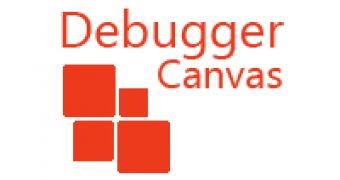I don’t know how many of you remember Code Canvas, a prototype from Microsoft Research focused on spatial orientation of code as the foundation of an integrated development environment, as its creator (Kael Rowan, Senior Research Software Design Engineer in Microsoft Research) described the project. Well, the new Debugger Canvas Power Tool built from a partnership between Microsoft Research and Brown University brings some concepts from Code Canvas to developers leveraging Visual Studio 2010 Ultimate Service Pack 1 (SP1).
According to S. Somasegar, Senior Vice President, Developer Division, Debugger Canvas is a marriage of ideas from both Brown University’s Code Bubbles and Microsoft Research’s Code Canvas.
What the new Visual Studio SP1 Power Tool is designed to do is provide a new experience for devs involved in debugging, allowing them to explore code in bubbles rather than file tabs, all in a single pan-and-zoom display.
“It displays the code of each of the methods you step into on a canvas with call lines between them, helping you keep track of the bigger picture as well as the details,” Somasegar revealed.
“Debugger Canvas pulls together all the code along a call path into a single display for browsing and even editing. Instead of having to keep all the code in your head while you look at one file tab at a time, now you can see the entire path on the canvas, enabling you to more easily track the flow of control and data through your application.”
And just to make things as clear as possible, Visual Studio 2010 Ultimate SP1 is indeed a requirement for Debugger Canvas.
Rowan explains why the limitation: “Debugger Canvas is built on top of Visual Studio Ultimate so that we could re-use the underlying technology for the Dependency Diagrams to identify and display the right fragments on the canvas. This re-use is what made it possible for us to release an out-of-band power tool in an efficient manner on top of Visual Studio 2010.”
Even when the Code Canvas prototype was presented to the world I felt that Microsoft Research had produced an excellent tool for VS developers. I continue to think this with Debugger Canvas.
As far as I’m concerned, Microsoft needs to build such innovation directly into Visual Studio vNext rather than offer it as a Power Tool.
At this point in time, Debugger Canvas for Visual Studio 2010 Ultimate SP1 comes with support for both C# and Visual Basic, but Microsoft is bound to make the tool play nice with additional languages in the future.

 14 DAY TRIAL //
14 DAY TRIAL //